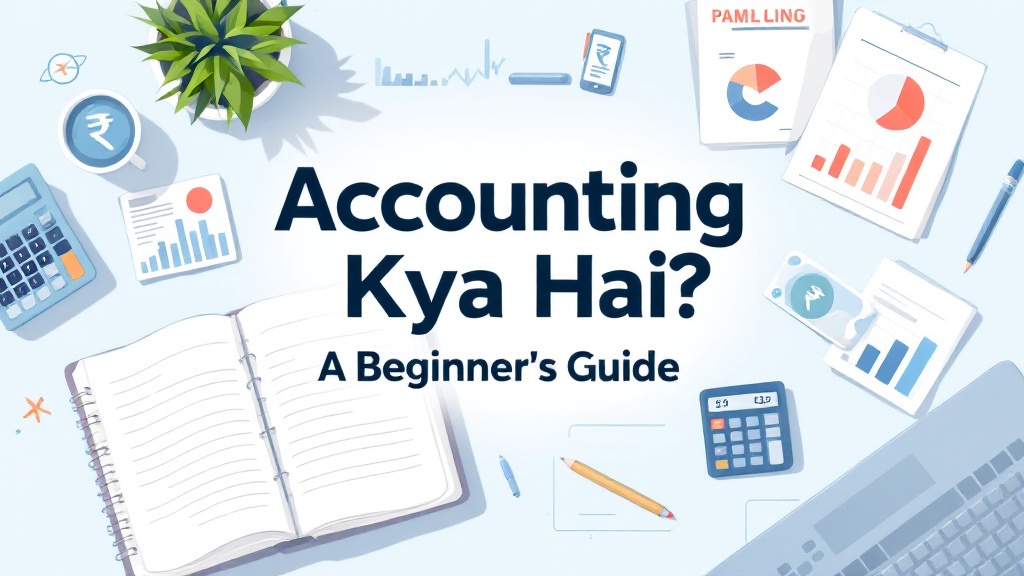CA Account Full Form: Everything You Need to Know
Table of Contents
Most Read
[fusion_dropcap class="fusion-content-tb-dropcap"]W[/fusion_dropcap]hen you hear the term CA Account, you might wonder, “What exactly does it mean?”
In the world of finance, business, and banking, CA holds significant importance.
In this blog post, we will explore the full form of CA Account, its meaning, types, benefits, and much more — all explained in simple, easy-to-understand language.
Let’s dive right in!
What Is the Full Form of CA Account?
The full form of CA Account is Current Account.
A Current Account is a type of deposit account maintained by individuals or businesses for frequent banking transactions.
Unlike a savings account, a current account allows unlimited deposits and withdrawals, making it ideal for businesses, entrepreneurs, and professionals who deal with large amounts of money daily.
In short, a CA Account is all about flexibility, liquidity, and ease of transactions.
Why Is It Called a Current Account?
The word “current” in Current Account signifies ongoing or frequent transactions.
This account is designed for people or businesses who require regular banking services without any limits on the number of transactions.
Think of it as a business wallet — where money flows in and out consistently to meet operational needs.
Key Features of a CA (Current) Account
Understanding the features of a Current Account will help you see why it’s essential for businesses. Here are the main highlights:
- Unlimited Transactions: No restriction on the number of withdrawals or deposits.
- Overdraft Facility: Banks often allow businesses to withdraw more money than their account balance (subject to approval).
- No Interest Paid: Generally, banks do not offer interest on the balance in current accounts.
- Minimum Balance Requirement: Most banks require a higher minimum balance compared to savings accounts.
- Ease of Payments: Facilitates easy payments through cheques, demand drafts, online transfers, NEFT, RTGS, IMPS, and UPI.
- Business-Centric Services: Some accounts come with added benefits like trade finance, business loans, or credit cards.
Who Should Open a CA Account?
A CA Account is not for everyone.
It is best suited for:
- Business Owners
- Traders and Merchants
- Companies and Corporations
- Professionals like Lawyers, Doctors, and Chartered Accountants
- Partnership Firms and LLPs
- Trusts, Societies, and Associations
Essentially, if you have frequent money movement related to your business, you definitely need a current account.
Benefits of Having a CA Account
Opening a CA Account comes with multiple advantages that help businesses thrive:
1. Smooth and Quick Transactions
With unlimited transaction facilities, businesses can manage daily operations efficiently without worrying about limits.
2. Professional Image
A current account enhances your business’s credibility and presents a professional image to clients and suppliers.
3. Access to Overdraft Facility
In times of cash crunch, businesses can use the overdraft facility to meet urgent financial requirements.
4. Customized Services
Banks often provide value-added services such as bulk payment options, salary processing, tax payments, and even business advisory services.
5. Separation of Business and Personal Finances
Keeping a separate CA Account ensures that your business finances are organized, making accounting, auditing, and tax filing easier.
Documents Required to Open a CA Account
If you’re planning to open a CA Account, here’s a quick checklist of common documents required:
- Proof of Identity (Aadhar Card, PAN Card, Passport, Driving License)
- Proof of Address (Utility Bills, Rent Agreement, Bank Statement)
- Business Proof (GST Certificate, Registration Certificate, Partnership Deed, Incorporation Certificate)
- PAN Card of Business Entity
- Photographs of Authorized Signatories
(Note: Document requirements may vary slightly from one bank to another.)
Types of Current Accounts in India
Current accounts come in different variations, depending on business needs. Some popular types include:
1. Standard Current Account
The basic type suitable for small businesses and individuals.
2. Premium Current Account
Ideal for established businesses needing higher transaction limits and premium banking services.
3. Packaged Current Account
Includes bundled services like insurance, business tools, and loans.
4. Foreign Currency Current Account
Specialized for businesses dealing with international trade, allowing transactions in foreign currencies.
5. Specialized Accounts for Startups
Some banks now offer current accounts tailored for startups with lower minimum balance requirements and digital benefits.
Things to Consider Before Opening a CA Account
Before you open a CA Account, keep these points in mind:
- Minimum Balance Requirement:
Make sure you are comfortable maintaining the minimum balance, or you may attract penalties. - Bank Charges and Fees:
Look into transaction charges, service fees, and overdraft interest rates. - Branch and ATM Network:
Choose a bank with a strong branch and ATM presence for easy access. - Online Banking Features:
A robust online banking platform can simplify your business banking. - Customer Support:
Good customer service can save you a lot of time and hassle.
How to Open a CA Account: Step-by-Step Guide
Opening a CA Account is straightforward if you follow these steps:
- Research and Compare Banks: Look for a bank that offers features best suited to your business needs.
- Gather Necessary Documents: Keep all the required documents handy.
- Visit the Bank or Apply Online: Many banks allow online account opening today.
- Submit Application and Documents: Fill the form and provide KYC documents.
- Verification Process: The bank will verify the documents and details provided.
- Account Activation: Once verification is complete, your current account will be activated, and you will receive your cheque book, debit card, and internet banking credentials.
Common Myths About CA (Current) Accounts
There are several misconceptions about CA Accounts. Let’s clear them up:
- Myth: Current Accounts are only for big businesses.
Fact: Even small businesses and professionals can and should have a current account. - Myth: CA Accounts are expensive to maintain.
Fact: Many banks now offer low-cost or zero-balance current accounts for startups and small businesses. - Myth: Overdraft is always available.
Fact: Overdraft facilities are offered based on the bank’s internal criteria and your creditworthiness.
Conclusion
In today’s fast-moving business world, a CA (Current Account) is not just an option — it’s a necessity for smooth financial operations.
Whether you are a freelancer, small business owner, or a large corporation, having a dedicated current account can make your banking experience more professional, organized, and efficient.
Before choosing a bank, make sure to compare features and pick one that aligns with your business goals.
Remember, the right CA Account can be a powerful tool to support your business growth.
FAQs on CA Account Full Form
Q1: Is CA Account only for companies?
No, even individuals like freelancers, consultants, and professionals can open a current account.
Q2: Can I earn interest on a Current Account?
Typically, current accounts do not offer any interest on the balance maintained.
Q3: What happens if I fail to maintain the minimum balance?
Banks charge a penalty for non-maintenance of the required minimum balance.
Q4: Can I open multiple current accounts?
Yes, businesses often maintain multiple current accounts with different banks for operational flexibility.
Visit Our Website : Accounting24.in









